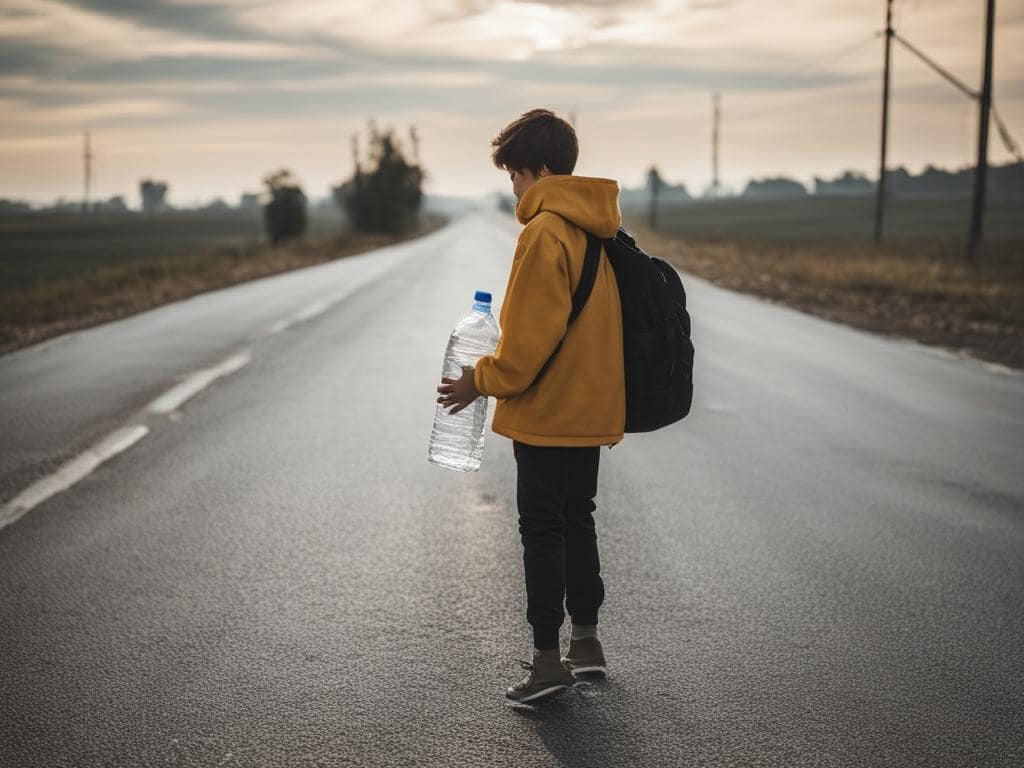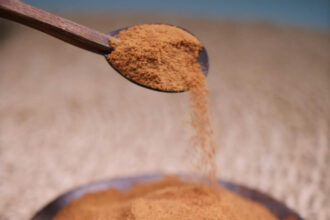Diabetes has been my constant companion for over a decade now. I don’t really like to call it a “companion,” but it’s definitely the one thing that’s always with me, 24/7. It’s not family, it’s not someone I love, it’s not even my pets or phone..it’s just diabetes.
At the tender age of 16, I was diagnosed with type 1 diabetes. In a flash, my carefree teen years disappeared, and life as I knew it changed forever. Now, 12 years later, managing this chronic illness is still an everyday struggle. Multiple daily injections, constantly thinking about my blood sugar levels, and the constant threat of dangerous high and low blood sugar levels are a part of my normal routine.
Eating whatever I want, whenever I want, is a luxury of the past. Diabetes requires discipline and perseverance, a fight I wage each and every day to stay healthy and avoid life-threatening complications. Some days, it feels like an uphill battle I can never win. But I continue the fight because giving up is not an option. Here’s what it’s like to be a diabetic.
Getting Diagnosed With Diabetes As A Teenager
Getting diagnosed with diabetes at 16 was terrifying. One month, I was a normal teen, and the next, I had this chronic illness that would require daily management for life.
Before I even knew I was sick, there were some signs something wasn’t right. My vision was getting worse, and I lost a ton of weight. I started noticing this weird acetone taste in my mouth all the time, too. Then it got to the point where I was drinking over 7 liters of liquids a day. I just couldn’t stop, I was drinking constantly and having to use the bathroom non-stop.
That year, I started high school, but I was extremely exhausted. From day one, I was falling asleep in class, just wiped out. After a couple of weeks, we took a class trip to Germany. That bus ride over was 6 hours long, and the whole time, I just kept drinking water, had to have gone through 3 liters at least.
The bus had to pull over 3 times so I could pee, too. But when we were stuck on the highway with no place to stop, I peed myself. I was so embarrassed, I just wanted to jump out the window to get away from it all. What a nightmare that trip was for me.

It’s been 12 years, but it’s still hard. Diabetes isn’t something you can ever forget about – I have to give myself insulin and check my blood sugar so many times per day, even in public. I can’t just eat whatever I want whenever I want, either. Every bite of food has to be carefully balanced with medication and activity.
There are times I just want to throw my hands up and say, “I quit!” In fact, I did this several times but survived. But now, I know I can’t. Diabetes is for life, so I have to find ways to stay motivated and not get burnt out.
Some days, diabetes wins, and my blood sugar goes too high or too low, no matter what I do. On those days, I try not to be too hard on myself. I’m human and not a pancreas! But most days, with diligent management, I’m able to keep my diabetes under control and live a normal, healthy life.
It’s a full-time job, but after 12 years of practice, I’ve gotten pretty good at it! Diabetes may be tough, but so am I. We’ve been in this together for over a decade already, so I know we can handle whatever challenges come next. This disease won’t define me – I define it. And each day is another chance to thrive.
How Painful Is Diabetes
I’ve heard people say, “At least diabetes isn’t painful, there are way worse diseases out there.” And that really gets under my skin. How would they know? Having diabetes is no walk in the park, I can tell you that. It is a daily battle, not only physical but also mental.
Diabetes gets called a “silent killer” for a reason. It might not always hurt, obviously, but you can definitely feel the pain sometimes. Diabetes really takes a toll on your feet, too. I’ve had cold feet in the middle of summer before just because my circulation was so messed up down there. And when there’s no blood getting to your feet, walking can hurt like hell.
It’s not just your feet, either. I’ve dealt with some nasty headaches, trouble sleeping, eyes so sore I could barely see, heart racing, shakes, nearly passing out – even had that awful metallic taste in my mouth a few times. And don’t even get me started on the fear of not having sugar on me and worrying I was gonna die. Diabetes puts you through all kinds of “crap.”

How Hyperglycemia (High Blood Sugar) Feels
With high blood sugar, your eyes feel like they’re underwater. It’s so hard to see clearly. It’s not just watery like tears, either – it’s inside your eyes, and you can’t get rid of it. One second, your vision is fine, and the next, you can barely see a thing.
And don’t even get me started on that awful taste in your mouth. Bitter is putting it lightly – I can’t even describe how bad it is. Water and coffee do nothing for it; that taste just sticks around being super unpleasant.
If your blood sugar is high for a long time, you’ll feel like you need to drink constantly, but it never helps. You just keep drinking and feeling worse. Your stomach hurts, your heart is racing, and before you know it, you lie unconscious on the ground. That’s actually how they diagnosed me with diabetes.
The scariest part is that high blood sugar can only be treated with insulin. So, if you don’t have any on hand when it happens, buckle up for one hell of a ride. The pain, the dark thoughts – there just aren’t words to capture how bad it gets.
How Hypoglycemia (Low Blood Sugar) Feels
Low blood sugar gives you one heck of a headache. It hurts so bad that even tilting your head makes your brain feel like it’s sloshing around in there. With hypoglycemia, you’re shaking, sweating, and about to pass out. Plus, you get all depressed and think the worst about everything. Nothing seems worth it, and it all just feels dark. Your mood shifts in a second.
When your sugar drops, you usually start shaking or sweating incredibly. And the hunger hits you in a way that’s impossible to describe. You’d seriously consider eating a flower or a dog treat, that’s how ravenous you get. Your body is in survival mode.
Many people describe low blood sugar or hypoglycemia as feeling like a hangover. And I get what they mean – it does feel similar. But there’s a big difference, too. With hypoglycemia, you’re in a race against time. You have to get some sugar in your system as soon as possible, whether that’s candy, juice, or a snack. Because if you don’t, things are just going to get worse fast.
With a hangover, yes, you feel crappy for hours or even a whole day. But you’ve got some leeway, you can just sleep it off in bed. With low blood sugar, you don’t have that luxury – you need to treat it fast before it gets bad. And no, with low blood sugar, you typically do not throw up (but you feel incredibly sick.)
So, hypoglycemia is no joke either because if you don’t get some sugar as soon as possible, you’ll go into a coma and maybe not wake up. Can you imagine being out in the wilderness somewhere or driving and having no snacks? Talk about terrifying. As a solo world traveler who’s always on the go, the thought of not having sugar with me is way scarier than running into a tarantula or snake in my tent.
Learning To Give Myself Insulin Injections in Public
Having diabetes means fighting an endless battle every single day. It’s difficult because the disease never takes a break – I have to be diligent about it 24 hours a day, 7 days a week. I have to inject insulin no matter where I am, even in public.
Learning to give myself injections in public was one of the hardest things to get used to. At first, I would find an empty room or go to the bathroom to inject, but that wasn’t always possible. I had to get over my fear of injecting myself in front of others. Now, I’m able to discreetly give myself an injection pretty much anywhere – at the dinner table, in a restaurant, even walking down the street.
But still, it can be tough having to take insulin shots. People sometimes see you doing it and assume the wrong thing. I’ve even had someone ask me twice if I was a drug addict, which really hurt. I wish people understood what I’m dealing with instead of jumping to conclusions. It would really make things a lot easier if people were more educated about invisible illnesses.
Misconceptions
There’s just so much misunderstanding out there that I don’t even know where to begin. But these are probably the biggest ones most people have:

You Can Eat Anything, Just Take Insulin
In theory, I can eat whatever I feel for. Since I’m diabetic, I can take insulin for any food. But that’s where it gets tricky. If I eat something without a nutrition label, how do I know how many carbs are in it? I’d basically be guessing how much insulin to give myself. And that’s risky business.
What if I underestimate and don’t give enough insulin? Then my blood sugar will spike, and I’ll feel awful. Or what if I overestimate and give too much? Then it’ll drop too low, and I’ll feel just as bad. So, while the option is there to eat anything, it’s not really practical when you think about keeping my blood sugar stable. I’d rather be safe than sorry. I don’t want to feel sick just so I can eat something without checking the nutrition info first.
And here’s one more thing. One unit of insulin doesn’t always mean you eat 10 grams of carbs. Sometimes, your body is super sensitive, and you need to eat more than that for one unit. And other times, your body isn’t very receptive to insulin, so you have to take more units or wait a bit before eating. The amount you need can vary depending on how your body is feeling that day.
Figuring out how much insulin to take is such a guessing game. There’s no instruction booklet or anything that tells you exactly how much you need. Every day, it’s just winging it, hoping I get the dose right so I feel okay. Sometimes, I nail it and feel great, other times, not so much. If you’re someone who enjoys trying new foods every day, going on adventures, working out, and staying on the move, you have to guess how much insulin to give yourself. Since your activities and what you eat are always changing, it’s tough to know exactly how much you’ll need.
Only Food And Drinks Influence Your Blood Sugar Levels
This is absolutely wrong. There are a lot of things that can impact your blood sugar levels besides just what you eat. Like, not getting enough sleep or feeling stressed out can really do a number on your blood sugar. I’ve been there where no matter how much insulin I take, my blood sugar just won’t go down. It’s the worst feeling ever, too, because sometimes, when it’s high, you just want to chow down, but you know you can’t.
On the flip side, though, if you head to the gym or get in a hard workout, your blood sugar can drop fast, even without any insulin. You can’t just go to the gym and start working out without worrying about your blood sugar levels. They say you should eat something before working out, but what if you suddenly have to sprint or do something physical, and there are no snacks around? That’s a scary situation, too. Blood sugar is tricky like that – there are so many factors involved besides just what you put in your mouth.
Diabetes Isn’t Painful
Diabetes IS painful! It’s not just headaches, insomnia, feeling sick or pain in your chest or eyes, or bad taste in your mouth. Diabetes really messes with your nerves. If your blood sugar is out of whack, your whole body can end up hurting. And the pain is next level. In the worst cases, you can lose your vision or even limbs. I know it doesn’t sound fun, but that’s just the reality of dealing with this disease. You really have to stay on top of keeping your blood sugar balanced.
Also, with diabetes, it’s crazy how long the body takes to heal sometimes. A few years back, I was up in Scandinavia hiking and got eaten alive by mosquitoes. My feet were just destroyed. But can you believe I still have marks on my legs today from that? It’s been three years already! No wonder they call diabetes the silent killer. With how slow healing can be, it’s no surprise that things can get really bad before you even notice.
Finding Motivation To Keep Up With My Diabetes Management
Twelve years later, it’s still an everyday struggle. And it always will be. The most important thing is maintaining a positive mindset. Diabetes is a lifelong challenge, so I have to choose each day to make the best of it. I focus on all the things I can do instead of what I can’t. Staying positive and solution-focused helps keep me motivated to stick with my daily diabetes management.
Sometimes, it can be really tough to stay optimistic and positive when you’ve got an illness that lasts forever. One that demands constant care every single day, all year long. And it’s not like there’s a cure. But that’s what makes me stronger. It made me appreciate each day because I never know which one might be my last. And on those days when I feel like a regular person without problems, I am so thankful for that feeling. It’s not easy having a condition that never goes away. But finding the good things, however small, really helps get through the bad times.
My Final Words
That’s what it’s like to live with diabetes every single day. A never-ending balancing act of medications, diet, exercise, and self-care. Some days, I wish I could take a break from it all, just for a little while. But diabetes doesn’t take breaks or holidays. It’s a full-time job that I didn’t apply for but got stuck with at the age of 16.
While technology and treatments have improved a lot, living with diabetes is still incredibly difficult. It impacts my life each and every day in so many ways, both big and small. But after 12 years of experience, I’ve learned how to adapt and make the necessary adjustments to live well in spite of the challenges. I just wish I didn’t have to work so hard for normalcy and health like so many others. Diabetes may be part of who I am, but I won’t let it define me.












